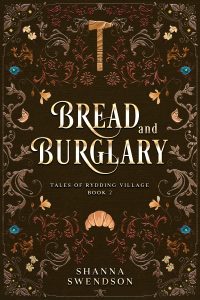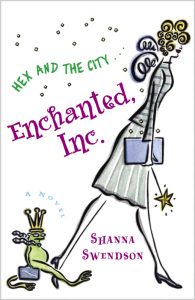I actually managed to watch a whole movie last weekend, something I hadn’t done since the move. It was one I thought might fit my fantasy road trip pattern, something in the “fantasy cheese” category that I originally saw on a Saturday night on the Sci Fi Channel. It’s currently streaming on most of the ad-supported services, but it’s also on the hoopla library system, without ads.
The movie is George and the Dragon, but it showed on Sci Fi as something like Dragonsword, and it’s a rather odd movie. To paraphrase a line from a book I had as a kid, when it’s good, it’s very, very good, but when it’s bad, it’s horrible.
The story is essentially a spin on the St. George and the dragon myth. War-weary Sir George returns home after the Crusades and just wants a plot of land where he can live a quiet life. He goes to the king to ask permission to buy some land and learns that the king’s daughter has disappeared on the eve of her wedding. The king says he’ll give George the land if he can find the princess. But the princess has other plans involving what may be the last dragon egg, and George isn’t a fan of dragons after one maimed his father (though he’s not entirely sure he believes his father about that).
When compared to the other fantasy cheese movies on Sci Fi, this one is a cut above. When compared to “real” movies, it’s on the B-movie end of things. It’s very tongue-in-cheek in a lot of places. I got the feeling the filmmakers were trying to do something along the lines of The Princess Bride, with some self-aware humor. The fact that the closing credits are bloopers and outtakes shows that the movie wasn’t meant to be taken entirely seriously, and for the most part the humor works, though there are some odd bits like a skateboard chase scene involving a priest (that I would suspect could be mapped onto the similar scenes in Back to the Future). Yes, a medieval skateboard chase. The priest lands on a little wagon and the sides fall off, turning it into a skateboard. This has very little to do with the overall plot, but it sets the tone.
The casting is mostly better than the usual fantasy cheese movie, in that most of the actors are moderately (even well) known and most of them are quite good. We have James Purefoy and Piper Perabo as the leads, with people like Simon Callow and Joan Plowright in small roles, Val Kilmer in an uncredited cameo, and Michael Clarke Duncan and Patrick Swayze in supporting roles.
Swayze is by far the weakest link and the biggest “why?” in the movie. Not that he’s bad if you take his performance out of context. He does a good job portraying his character and seems to be having a lot of fun. The problem is that the movie is set in medieval England, and Swayze sounds like he’s from Texas. I’m sure it would have been even worse if he’d attempted an English accent, but this is worse than Kevin Costner’s attempt at Robin Hood. True, the people in this time period (and more on that later) would have been speaking either Norman French or Old English and we have to assume that everyone is being translated into modern English, but it would help if everyone who’s from the same place sounds like they’re at least from the same continent. (Duncan and Kilmer also use American accents, but they’re not supposed to be English, so it’s not so grating.) Piper Perabo is American (and also a Texan), but she does a decent English accent (at least, to my American ears).
As for the time period, I’m not sure what was going on with that. George is returning from the Crusades (in an opening that’s basically a copy of Prince of Thieves), which would put this after the Norman Conquest, but we’re dealing with a King Edgar, who’s not on the list of Norman kings, and who has his court in the north of England, where the main threat is from the Picts, which would put this during the Saxon era and before the Saxon kingdoms consolidated — long before the Crusades. This is supposedly England in our world, but at times they treat it like secondary world fantasy. The costumes are generic medieval-ish. Some of the men’s costumes are pretty good, aside from the poor kid who goes through the movie with a bath mat tied around his shoulder. The princess wears a dress that’s obviously polyester stretch velvet. She looks like she’s wearing a princess costume from Spirit Halloween.
But George is a wonderful character, going through all this stuff when he really just wants a quiet life, and Purefoy manages to find a nice balance in making him world-weary without being a downer. The duke the princess is supposed to marry keeps trying to make him jealous about marrying the princess, and George doesn’t care. He just wants his land. He and the princess have good chemistry. She’s very much the modern “spunky princess,” but I think it works here. As long as the film focuses on George, the princess, the royal advisor, and the kid who’s helping them, the film is a lot of fun. There are some excellent fight scenes that are quite inventive, especially one where there are multiple factions and shifting allegiances, with people going from fighting each other to fighting the common enemy and then back to fighting each other. In these parts, Patrick Swayze is even good, probably because he’s not talking.
This is very much a turn-off-your-brain popcorn flick, but it can be fun if you’re looking for a fantasy film you haven’t seen dozens of times (why are there so few good fantasy films?). It’s better than some of the cheaply made movies on the free streaming services and the lead characters are pretty likable. It has a nice ending that leaves you with a smile.
It turned out not to really fit my fantasy road trip pattern because the road trip is a very small part of the movie. It’s the good part, which may be why that was all I remembered of it. It is kind of a fantasy rom-com, though the hero and heroine don’t meet until about halfway through the movie.
 It’s a release day birthday for me. Bread and Burglary goes on sale today as an e-book. The paperback should be on sale at Amazon tomorrow (August 8), and it may take a little time to get picked up by other systems. Amazon changed their way of handling paperbacks since my last book, so my usual timing for setting up the paperback so it would come out at the same time as the e-book turned out to be off. I don’t currently have any plans for audio. That’s beyond my budget right now, so the series needs to either sell well enough for me to make the kind of money I’d need to invest in audio and show that it would be profitable in audio, or well enough for Audible to see it as a good bet and buy the audio rights.
It’s a release day birthday for me. Bread and Burglary goes on sale today as an e-book. The paperback should be on sale at Amazon tomorrow (August 8), and it may take a little time to get picked up by other systems. Amazon changed their way of handling paperbacks since my last book, so my usual timing for setting up the paperback so it would come out at the same time as the e-book turned out to be off. I don’t currently have any plans for audio. That’s beyond my budget right now, so the series needs to either sell well enough for me to make the kind of money I’d need to invest in audio and show that it would be profitable in audio, or well enough for Audible to see it as a good bet and buy the audio rights.


 On Monday (July 22 if you’re reading the archives), it will have been twenty years since I got the book deal to have the first two Enchanted, Inc. books published.
On Monday (July 22 if you’re reading the archives), it will have been twenty years since I got the book deal to have the first two Enchanted, Inc. books published.